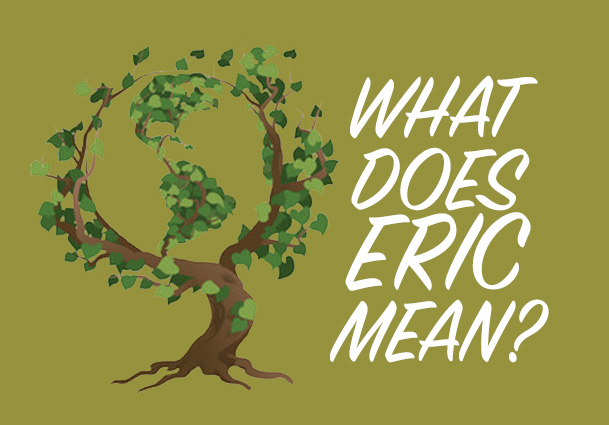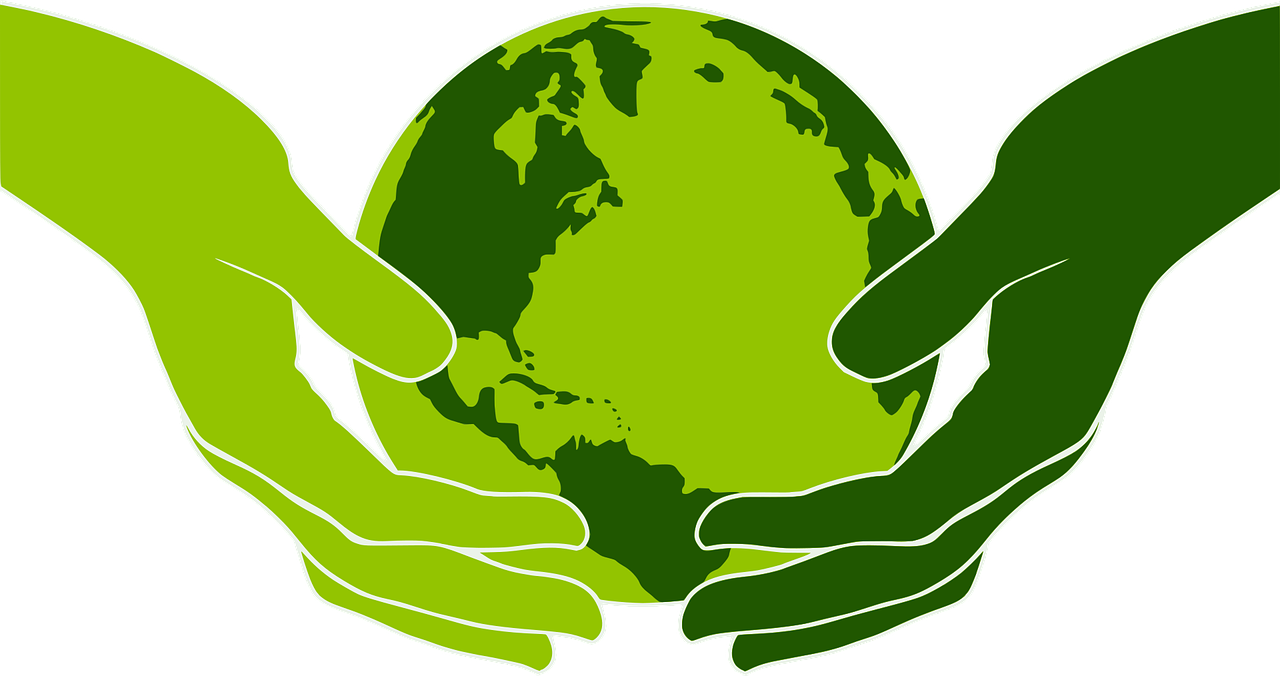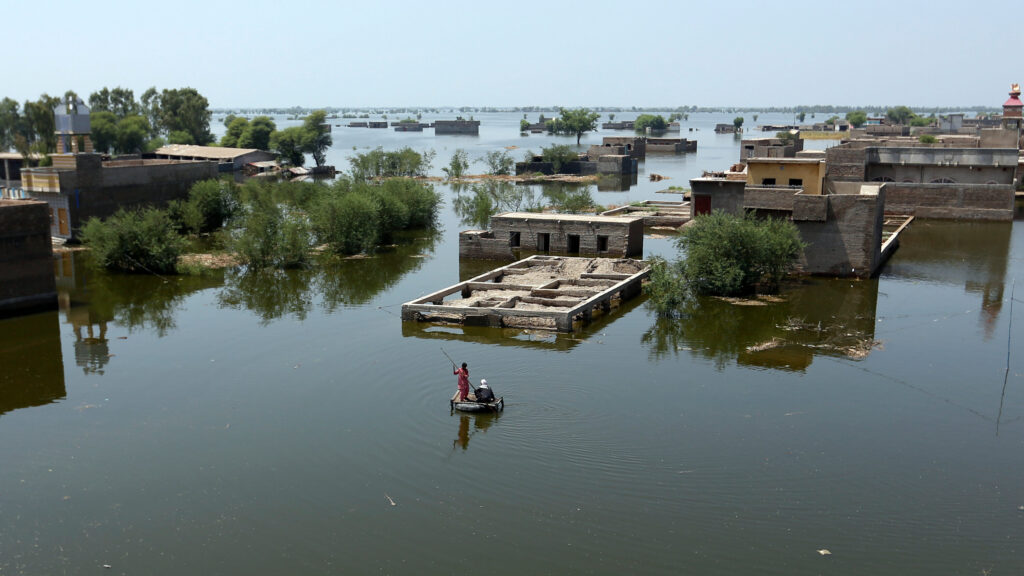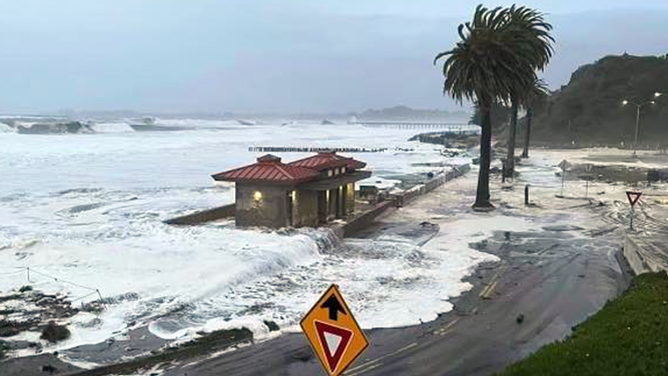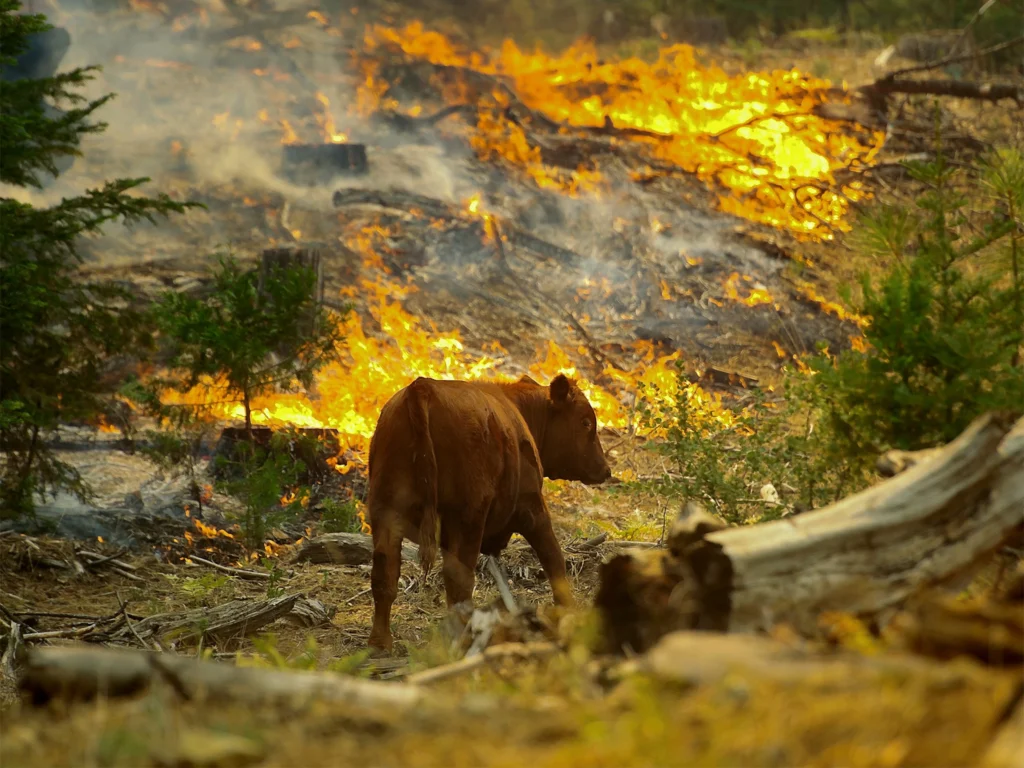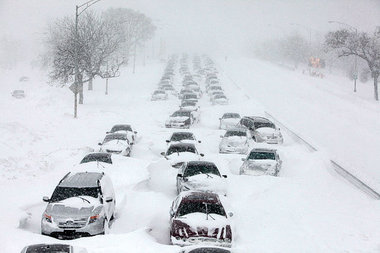What do you think is the difference between right and wrong when it comes to discussing the issues around Climate Change? Is it facts? Is it feelings? What about a degree?
What happens when all the degree people, experts and professionals, talk about the issue for so long and in so much detail that we tip over a degree of warming? What happens when their decisions have immediate and tangible consequences on the lives of the rest of us?
Well, nobody has those answers, yet.
It seems that so many discussions revolve around what is to be done and how changes should be implemented that the lives of regular people get lost in the shuffle. We have to live in this world whether it gets changed or not—hot or cold.
This begs the question: what do we—the workers, teachers, janitors, drivers, plumbers, servers, salespeople, etc.— do about living in a world where the climate is changing rapidly but are stuck between out-of-touch experts and ineffective politicians?
Well, we learn. We do everything we can to teach ourselves about the possible nightmare we are being pushed into. We listen to the experts with open ears, ready to raise our hand to ask, “What about us?” We crowd the rallies of elected officials, calling their offices and demanding equitable actions be taken.

But we all have to start somewhere. Here are three shocking facts about Climate Change that each one of us has to understand if we want to start making a difference.
1. It is not your fault!
Since the 1960s, it has been incredibly popular to blame the shifting climate conditions on the average consumer. It makes sense on the face of it, of course.
We buy products, use or ingest them, and then discard the waste. As products gain popularity, their waste piles up—literally. In landfills, the leftovers of consumer goods are stacked up, and continue to produce more greenhouse gases (GHGs, the gases that cause global warming). The more we buy, the more they make.
However, we must understand that the consumer culture of Western countries is a factor of capitalism, not a factor of human nature.
Personally, I grew up with a consistent feeling of guilt hanging over me. That every time I did not use an item or eat 100% of a meal, I was contributing to the global mess of climate change. That my ‘recycled’ toys would end up in the belly of a fish. Or that every plastic bag I used would resist decomposition for hundreds of years. That every time I drove somewhere I could have biked or bussed to, I was responsible for the upcoming apocalypse.
These narratives were clever distortions told by the world’s biggest polluters. After petroleum scientists working for ExxonMobil in the ‘60s discovered that the oil they were helping produce will cause dramatic shifts in the Earth’s climate, they raised those concerns to their bosses. These fossil fuel executives, without mercy, buried their scientists’ discoveries. Instead of investing money to fix the problem they created, they diverted large sums of money into lying to the public.

This is the first instance of climate disinformation: publicly disseminated information with the intention to provide false or skeptical claims about climate change.
Since then, these campaigns of climate disinformation have led up to 85% of people worldwide to believe that it is them and their buying habits that are the cause of climate change, if they believe it at all.
Consumer (Cult)ure
The consumer culture we live in today is totally unprecedented: there has never been a time in history when so many people have easy access to so much stuff. It’s great, usually. Now, I only freeze up for a few seconds when I reach the tsunami of boxes that line the cereal aisles of every large grocery store!
My point is this: we all live in a system that encourages us to buy as much stuff as we can afford. Whether we buy a mega-pack of toilet paper or a new Gucci belt, a large corporation has paved the road to get us there. We are convinced we cannot live without the latest and greatest stuff.
Yes, we all play a role in causing climate change, but to live in this system, we must make choices that work best for us. We don’t always get the choice to buy from a violence-free, organically-farmed, ethically sourced start-up when they have to double the price of their sustainable product to stay in business.
Instead of feeling guilty for buying sick Nikes that might have been made with child labor, let’s turn our attention to these multi-billion, multi-national companies and lobby them to end practices of unethical production and making large, yearly contributions to the worsening climate. Let’s give them reasons why they need to either shut down or find a more sustainable and affordable business model.
2. We’ve already made awesome changes to help the climate!
Hey, remember that time we made a giant hole in the ozone layer? Whatever happened with that?
Well, we fixed it. Kind of.
In case you don’t remember, or you don’t even know what happened, let me give you a summary…
Scientists in the 1970s noticed a thinning in the Earth’s ozone layer, an invisible layer of gases in the stratosphere, mainly composed of ozone (O3), over Antarctica. Earlier that same decade, it was predicted that the ozone would be depleted by common gases, chlorofluorocarbons (CFCs, a molecule made up of carbon, fluorine, and chlorine; found in aerosol cans and coolant) due to a chemical reaction between ozone and chlorine.
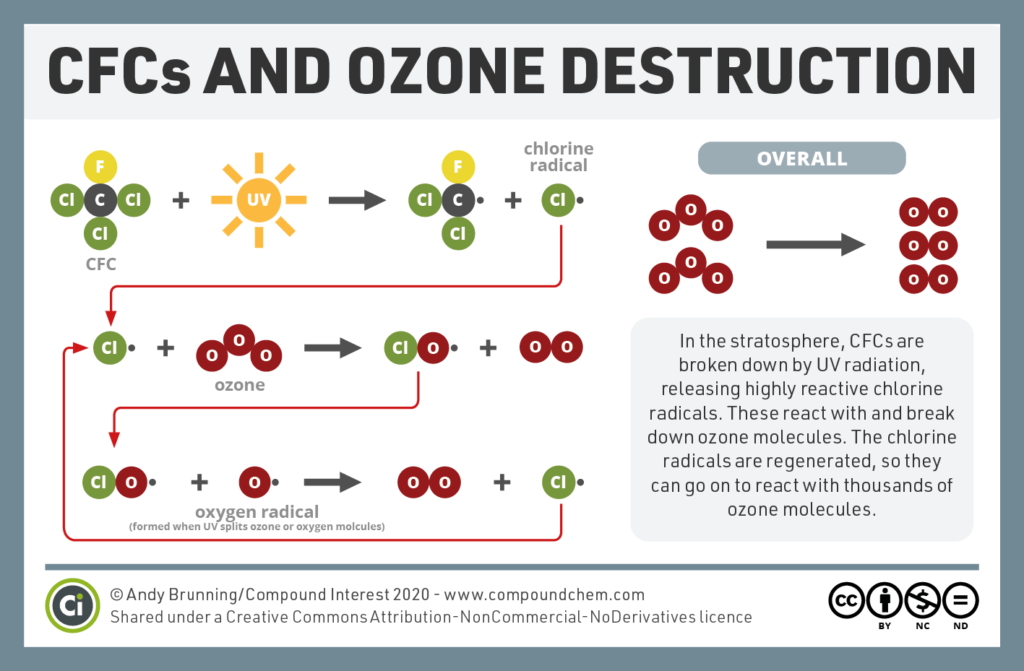
Once the CFCs reach the stratosphere, the sun’s UV light breaks off a chlorine atom. It immediately attracts one of the ozone molecule’s three oxygen atoms away from the ozone. This reaction makes chlorine gas (ClO) and regular oxygen gas (O2). The breaking up of these ozone molecules is what was causing the thinning of the atmosphere.
Ozone is incredibly important in the protection of the Earth from the Sun’s more harmful UV rays. Ozone absorbs and reemits these rays back into space, away from the Earth and us. Without it, the UV rays would cause horrible sunburns, skin cancer, and even alter DNA.
How we fixed it
Once this fact started to pick up around the world, governments in the 1980s started to make plans to ban chlorine-rich gases like CFCs and gases with bromine, an element that has a similar effect on ozone. In 1987, the Montreal Protocol was signed by all United Nations members and a few other countries. The treaty aims to phase out CFCs and related molecules from wide public use in order for the ozone layer to replenish naturally.
The Montreal Protocol and the Vienna Convention (1985) were the first two multi-national treaties signed in order to protect the world’s climate. However, it was not all rainbows and sunshine.
The industries that regularly use and make products that need CFCs lobbied the US government, testifying that the science was too uncertain to justify any action. Calling the theory bogus, they insisted that they be allowed to continue to make products that degraded the atmosphere.
Even with their best lobbying efforts, the scientific evidence was overwhelming, especially with reports supporting the science from the National Academy of Sciences.
More than 35 years later and the ozone layer has been making a healthy recovery. Estimates suggest the global ozone layer will return to 1980s status by 2040 and the hole over Antarctica by 2066.
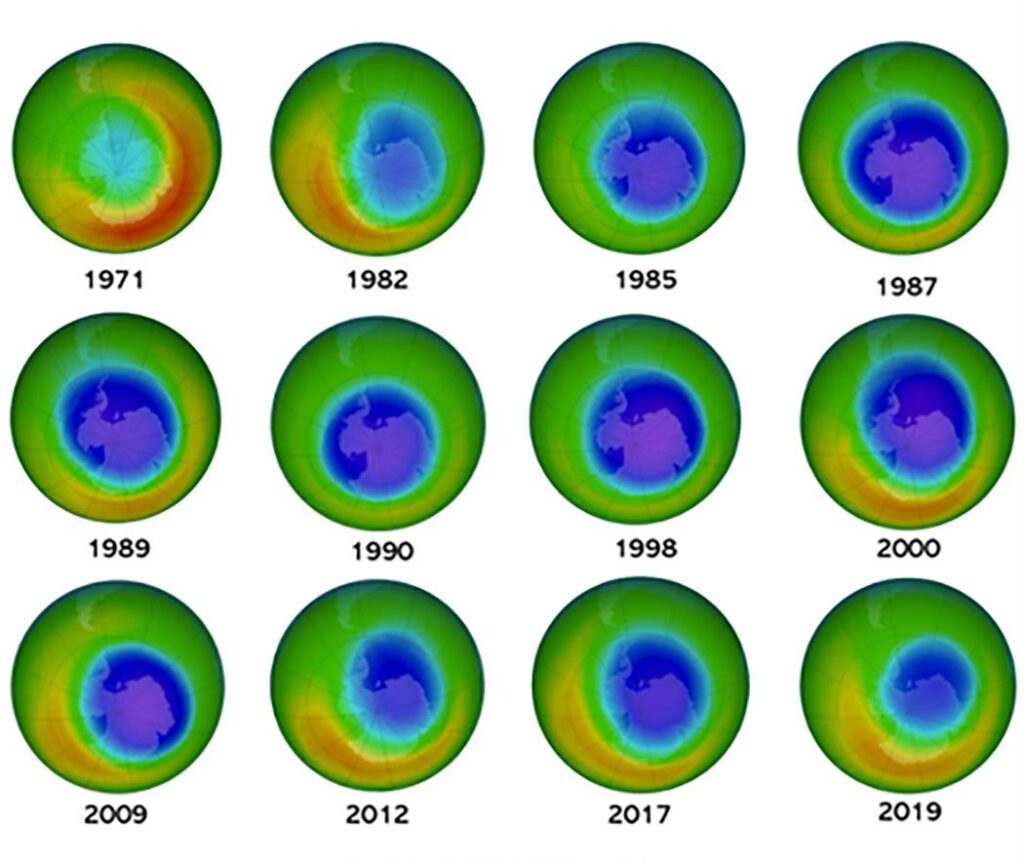
The story of the ozone recovery is proof that the world can come together and make important changes to alleviate the symptoms of man-made climate change. Though the change to everyday peoples’ lives was small, (since CFCs were used in aerosols like hairspray and cooking spray, and were easily replaced) it shows that when the science is clear, good faith actors can push for unprecedented and vital legislation and win.
3. There is no silver bullet!
I don’t know about you, but when I hear news stations bring up a story relating to climate change, they almost always talk about the issue like it’s somehow an approaching storm while also a fleeting issue we’ve already conceded to. It makes me want to rip my hair out.
Man-made climate change will have lasting and devastating effects for decades to come. It is not an approaching storm that we still might have time to fix (if we choose to). Climate change is already starting.
Stronger and more frequent storms. Longer droughts (bonus links: 1, 2 ) and historic floods. Ecological collapse and mass migration. Rising sea levels. Record heat waves and snowfall. Jet stream and ocean current disruption. All of these are the result of a warming climate, and all of them are happening. Presently or very soon.
There is nothing we can do to stop the climate from changing, unless you have a time machine.
But that doesn’t mean we give up or let it keep happening.
We can still stop warming from getting any higher and triggering more tipping points (thresholds that, once crossed, change a natural system permanently). However, there isn’t just one thing we can do. Another popular narrative I hear implies that we just have to wait for a miracle technology that will reverse all of the climate change and save us all.
Well, it likely doesn’t exist. It could come out tomorrow, sure. Or the next day. Or the next. Or in ten years. Does that mean we sit on our hands and take the battering of catastrophic weather events?
NO!
Get over it
There is no silver bullet technology that will kill the monster we have created. Even if we shut down fossil fuels completely tomorrow, what we’ve already done will be enough to cause death and destruction for a few decades, not to mention the chaos such a quick shutoff would lead to.
We must tackle every problem that arises as best we can and apply customized solutions to each of them. That creates a huge vacuum of people that can understand and solve each of these problems on a local level.
Wind, solar, and other renewables are great, but only in choice areas. Nuclear is the safest energy generator, but it’s unpopular, expensive, and takes too long to build. Carbon capture might be the closest thing we have to a silver bullet, but it’s also expensive and, in some cases, emits more GHGs than it captures. Planting genetically enhanced trees will sequester loads of carbon, but clearing the land for forests destroys ecosystems and second-growth forests reduce biodiversity.
Though they have their issues, the mix of all these solutions will be the best chance we have to slow climate change, in addition to phasing out fossil fuels.

Conclusion
Ok, so you see that climate change is a complicated topic. After decades of gaslighting from the fossil fuel industry, the waters are muddied (polluted, really). It’s hard to know where your own responsibility ends, and the blame of fossil fuel executives begins.
But we know that in the case of the ozone layer, we did come together to make the change the Earth needed—what was right for us and future generations. This story always gives me hope that we can do what is right for the whole planet again.
The road ahead is long and arduous. Littered with plastic, with roadblocks erected by men with deep pockets, combatting anthropogenic (man-made) climate change is the fight of our lives. Though, this is not a battle of swords or guns, but one of information and education.
Learn everything you can, when you can, and remember: the pen is mightier than the sword.

If you’re curious about what Eric means, see my first blog post, here.
